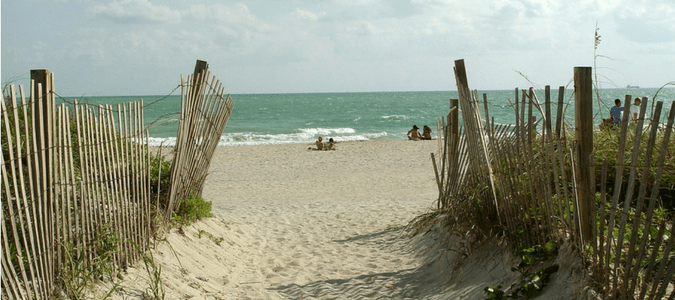
You’ve waited for that perfect beach vacation to come. You packed your swimsuit, beach towels and have the perfect day planned. But, once you get set up in the sand, you start feeling little bites on your legs. You look down and can’t see anything. You have no idea what bit you. These beach bugs that bite can be called a variety of things: sand fleas, sea lice, sandflies and no see ums, just to name a few possible culprits.
In this post, we’ll explore what kind of critters dwell in the sand and which ones might nibble on us, how long sand flea bites last, the difference between sand flea bites and bed bug bites and answer the common question, “What are no see ums?”
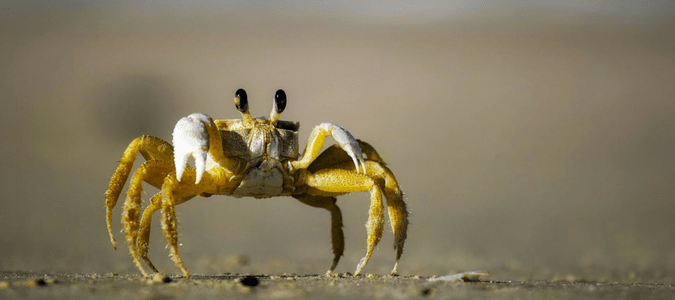
Sand Dwellers
There are a number of creatures that live in beach sand, most of which don’t bite humans. These sand dwellers include several species of crustaceans, such as sand crabs, roly polies, beach hoppers, sand fleas and sand flies.
However, there are some creatures that can bite us and which often do, which can definitely make our time on the beach less pleasurable. Sand fleas are one of the most common biting sand dwellers. If you develop welt-like bites that are similar to mosquito bites, they are most likely from a sand flea. According to an article in the Chicago Tribune, these pests “feed on their hosts’ blood, leaving painful, itchy welts and sometimes spreading parasites and disease.”
The most common sand flea species found at the beach is the Orchestia agilis, also known as the common sand flea. These animals are crustaceans and do not bite people. The chigoe flea is the type of sand flea that bites people and animals. This species lives in soil and in the sand. The females can burrow into your skin until they release their eggs about two weeks later. You can tell if a chigoe flea has burrowed under your skin by looking for a small black speck in the middle of the swollen bite. These biting bugs typically attack your feet and ankles because they can’t jump very high. However, if you lie down on the beach where they happen to be, they can bite you anywhere.
The University of Southern California has a Chigoe Flea Eradication project which seeks to eliminate infestations of the pest in the third world. According to the researchers, infections from Tungiasis cause a debilitating condition which impacts the quality of life for hundreds of millions of people all over the world. This skin infestation is mostly found in the poorest countries where there is limited access to medical care.
Some people refer to sand fleas as sea lice. However, sea lice are “tiny crustaceans that live in the ocean and feed on certain types of fish, but don’t bother humans at all.” What most people refer to as sea lice are actually something quite different: jellyfish larvae. These small particles float together in groups in the oceans. Although they are quite small, these larvae still have nematocysts, which are stinging cells more commonly associated with the adult jellyfish.
If sea lice get caught inside of your bathing suit while you are in the water, they can become trapped, which results in a stinging sensation. In rare cases, a person who has been stung can experience intense itching and burning or a rash made up of small, raised blisters. These rashes typically go away on their own anywhere between two days and two weeks, although a cortisone-based cream and Benadryl can minimize discomfort. Along the Gulf Coast, sea lice are prevalent from April until August each year.
Sand wasps will sting you, but they aren’t aggressive like other wasps. They rarely sting people and only usually if their nest has been disturbed.
Sand flies are often also called “no see ums” or biting midges. These insects can bite you a lot like a mosquito would.
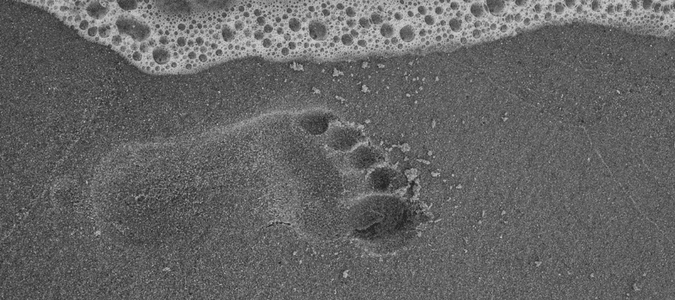
How Long Do Sand Flea Bites Last?
We’ve already established that true sand fleas are more commonly found in impoverished countries. That said, you can be bitten by a number of other animals commonly called “sand fleas”, including biting flies, midges and even dog and cat fleas. After you are bitten by a flea, a wheal reaction occurs. This skin irritation is characterized by “an area of elevated skin that’s sometimes surrounded by reddening. The reaction is slightly itchy…and the inflammation peaks within a few hours, and is completely gone 12 hours later.”
However, you aren’t out of the woods once the swelling goes down. “A papule replaces the wheal 12 to 24 hours after the bite.” Now, the site of the bite becomes a hard, raised, red itchy bumpy surface that can swell. This stage can last anywhere from two days to two weeks. If you are one of the unfortunate people who are allergic, blisters may also form after a flea bite.
Like most bites, secondary infections can occur if you rub, scratch or do anything that causes the wound to reopen. The bite site may also develop into a boil which can last four to six weeks.
In very rare cases, for people who are highly allergic, flea bites can last up to two years.
To minimize the long-term impact of a flea bite, refrain from scratching the affected area. Use calamine lotion to alleviate the itching sensation. You can also take ibuprofen, Tylenol or Benedryl to reduce the pain and swelling. Aloe vera has also been known to minimize discomfort after flea bites. Check for the little black spots to see if you have been bitten by a true breeding sand flea if you are traveling in Latin America, the Caribbean and in parts of Africa. If you develop fever, nausea, significant swelling or a rapid heartbeat after a bite, you should seek medical treatment.
Getting bit by a flea is not a pleasant experience. Since these creatures are so tiny, bites can sometimes be mistaken for other, similar small creatures.
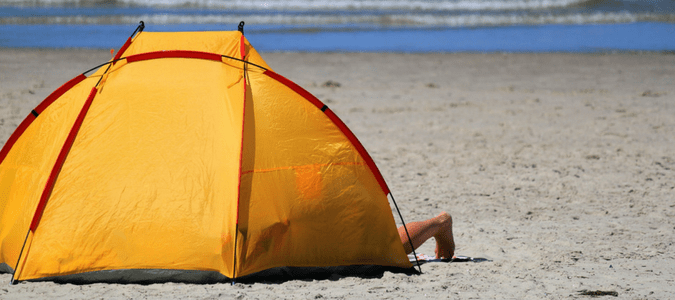
Sand Flea Bites vs. Bed Bug Bites
If you are traveling, you may wonder if the scratching and irritation you are experiencing is from sand flea bites or bed bug bites—or from something completely different. There are a few ways you can tell the difference between these bites.
Sand fleas are most active when it’s cool and moist. Usually, you are more likely to be bitten if it has been raining or in the morning or evening when these pests are most active. Bites from sand fleas tend to be more on your feet and legs because you usually walk through their territory. However, if you’ve been lying or sitting on the beach, as we mentioned earlier, they can and will bite you anywhere.
If you are bitten by a breeding female sand flea, you will usually see a black spot in the center of the bite. These biting creatures burrow under your skin until their eggs hatch.
Sand fleas can also enter your home and feed on you and your pets, which can eventually cause your animals to become sick.
Bed bug bites also look like mosquito bites, but tend to be in linear rows. Bites from bed bugs can be found anywhere on the body. Bed bug bites also often turn into blisters. Bed bugs and the evidence of them are typically easier to spot or rule out.
To try to check if you have bed bugs, the first thing you’ll want to do is to inspect your sheets. Do you have blood stains or dark or rust-colored spots on your sheets? That may be an indicator of bed bug activity. If you smell a musty odor, bed bugs may be to blame. Bed bugs are “small, oval, brownish insects that live on the blood of animals or humans. Adult bedbugs have flat bodies about the size of an apple seed.”
If you inspect your sheets and can’t find any evidence of these creatures, take a close look at your mattress, box springs and other hidden places around your bed. If you find an infestation, then you will know that your bites are most likely caused by bed bugs and not sand fleas.
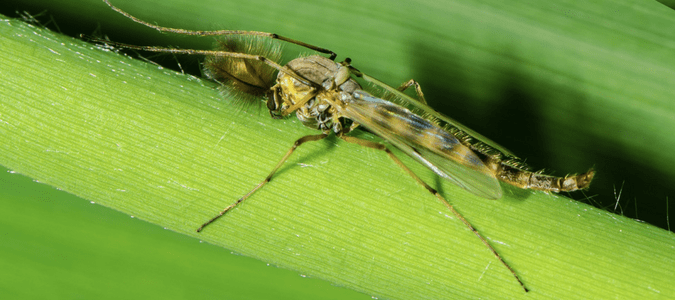
What Are No See Ums?
The University of Florida’s Entomology Department refers to no see ums as biting midges, although these bothersome bugs are also sometimes also incorrectly referred to as sand flies. These annoying insects live all over the world, but the Leptoconops species live in tropical and subtropical climates and in coastal areas. There are more than “4,000 species of biting midges in the Ceratopogonidae family” and they live all over the world.
These creatures are incredibly tiny, hence the common name “no see ums.” Adults are gray and less than ⅛ inch long and look like a teeny tiny fly when viewed under a microscope.
The bites from no see ums can be painful and can cause lesions if someone is allergic. Some species carry viruses that can cause diseases in people and animals. Some of the viruses biting midges transmit have been known to be lethal to animals.
Normally, the males and females midges feed on nectar. However, since females need blood for their eggs, they sometimes bite people and animals so that their eggs have the needed nutrients to develop.
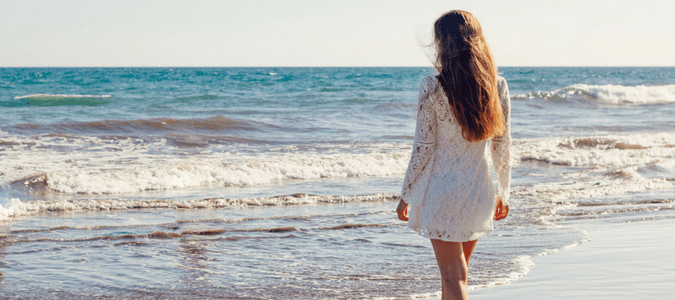
How to Protect Yourself From Beach Bugs
The most effective measure to protect yourself from biting beach insect is to spray yourself with DEET when going outside. Avoid the beach when it has been raining to protect yourself from a higher concentration of sand fleas. Cover your skin, especially when sitting or lying on the beach, to put a physical barrier between you and the sand fleas.
Insecticides have proved effective when treating no see ums, sand flies and bedbugs.
If you have bed bug bites, treatment should be different. First of all, you’ll need to wash all bedding, blankets, towels, comforters, curtains and clothing in hot water to eliminate bed bugs in your home. Anything that can’t (or shouldn’t) go through the washer, like shoes, can be placed in a bag and placed in the dryer on high for at least 30 minutes to kill any lingering live bugs.
WebMD recommends scrubbing your mattress and boxsprings with a stiff brush to remove bedbugs and eggs. Then, you will need to vacuum your mattress, box springs and the surrounding floor. When you are done, place the vacuum bag in a plastic bag and dispose of it in the garbage outside.
You can purchase a zipper cover for your mattress to keep bedbugs enclosed. These pesky pests can live up to a year on your mattress, so keep it covered to protect yourself against bed bugs making their way out.
Truly getting rid of bedbugs usually requires the help of a professional pest control company.
If you have a sand flea infestation, a deep cleaning of your home and steam cleaning your carpet often proves effective at controlling the problem. You will want to treat your yard as well to ensure these pests don’t have a way to get back sindie your home.
Banish Beach Bugs From Your Home
No one wants their time at home disrupted by the annoyance of biting pests. Homeowners can count on ABC to accurately diagnose the source of your problem and to recommend measures to address any potential infestation. With ABC’s help, you can handle fleas, bed bugs, mosquitoes and other common household pests whose bites can be a nuisance and a potential health risk. Schedule a service today to get an experienced pest control technician to help you with your pest control problem.
